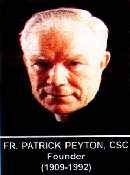|
|
|
MARIAN THEOLOGY
|
|
THE FUNDAMENTAL PRINCIPLE
IN MARIOLOGY
|
Since the theology of Our Lady comprises inter-related truths (as does any body of knowledge), coherence and progress would seem to demand agreement on a basic or primary truth. Suarez (qv), the first exponent of systematic Mariology, felt this need. St. Lawrence of Brindisi (qv) stated it clearly. Since the thirties of the 20th century, the problem has been frequently discussed. It has lapsed somewhat since Vatican Council II (qv). The results of the discussion, however, remain impressive. K. Rahner, in 1954, proposing his own answer to the problem, listed ten others. R. Laurentin, in 1968, estimated that the number of answers had risen to thirty.
Some theories are based on analogy of one or another between Mary and Christ, others on a relationship between them. Christ-type and Church-type ideas affect the first group of theories differently. Thus Mary is seen as the new Eve, and for Louis Billot this would appear the basic principle. Mary as the archetype of the Church was the central idea of O. Semmelroth's book. K. Rahner proposed the idea of Mary as the highest instance of Redemption, an opinion which had some effect on the speech made by Cardinal Koenig at Vatiacn II (October 24, 1963). A Mueller, author of the seminal work on Mary and the Church, concluded that Mary's fullness of grace, rightly understood, was the key to her whole life.
Those who proceed from a relationship, that of motherhood, differ in the application of their thought. M.J. Scheeben defended the concept of bridal motherhood. J.M. Bover, S.J. chose the divine maternity seen in its full, concrete and historical significance. N. Garcia Garces, CMF, thought of Mary as "Mother of the whole Church, head and members"; G.M. Roschini, OSM, thought of Mary as the universal Mother. Cl. Dillenscheneider, CSSR, concluded a work devoted entirely to the subject with this elaborate formula: Mary's divine, messianic maternity in its personal, soteriological and ecumenical dimensions. G. de Broglie, SJ, also framed a comprehensive statement: Mother of the Word divine, incarnate among us to save mankind by his expiatory renunciation and by the association of redeemd souls to this way of life.
There is no direct official teaching on the subject. There has been, however, a repeated emphasis in Council and papal pronouncements on the divine motherhood. The essential title is used by Ephesus which proclaimed it, by Trent which referred to Mary in its teaching on Original Sin, and by Pius IX in the dogma of the Immaculate Conception and Pius XII in that of the Assumption. Vatican II devoted some 200 words of Chapter VIII in Lumen Gentium to titles of Mary. She is styled Mother in sixteen different ways, Mother of God most frequently. The Council expressed two other ideas of some relevance, the indissoluble union between Jesus and Mary and the Mary-Church typology. No principle emerges with absolute explicitness.
The debate has helped to enlarge the theological visions of Mary and can still do so, provided the deductive method, which it favors, does not become detached from the sources of Marian theology.
|

|
MARY: FULL OF GRACE
|
The term "Full of Grace" in Mariology is the English translation for gratia plena, which is the Vulgate rendering of Kecharitomene (Luke 1:28). This Greek term means favoured one: it is from charitoun, a factitive verb, "to make one favoured, to give one grace," Full of grace became a key description of Mary in western tradition. Until very recently, it was used by every writer in the Latin Church, in all official documents of the teaching authority down to Vatican II. The Council would not alter it despite requests from the Council of Fathers to do so.
Mary's fullness of grace became a basic concept about her in theology. It was expounded in relation to her vocation as Mother of God; views have been expressed on the one had that is was separable, and on the other inseparable, from this office. It has been seen as the foundation of Mary's unique holiness and consequent sinlessness, and it has been proposed as the fundamental principle of all Marian theology. Scholastic theologians have deduced from it the entire grouping of the theological and moral virtues, the Gifts of the Holy Spirit, and extraordinary graces and charisms. In medieval times, Pseudo-Albert had made a still wider series of deductions. Mary's merit is proportionate to her grace.
Vatican II speaks thus of Mary's eminent grace: "Because of this gift of sublime grace, she far surpasses all other creatures, both heaven and earth." Adorned from the first instant of her conception with the splendors of an entirely unique holiness, the Virgin of Nazareth is, on God's command, greeted by an angel messenger as "full of grace." (Luke 1:28, Lumen Gentium: Dogmatic Constitution of the Catholic Church 53,56)
Prior to the Vulgate, Kecharitomene was not uniformly rendered by Gratia plena, gratificata or benedicta occur in some manuscript versions. Erasmus used gratiosa, and in this was followed by the Reformers. St. Peter Canisius protested against this.
|
|
*******************
Source: THEOTOKOS: A Theological Encyclopedia of the Blessed Virgin Mary;
Fr. Michael O'Caroll, C.S.Sp., author; 1982 by Michael Glazier, Inc., Delaware in
Washington and Dominican Publications in Dublin, Ireland.
|

|



